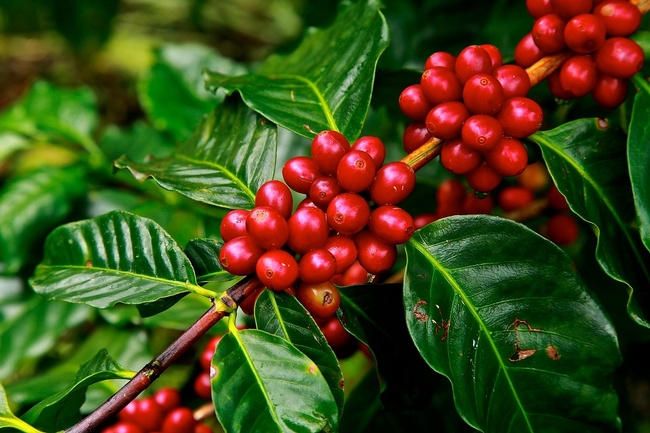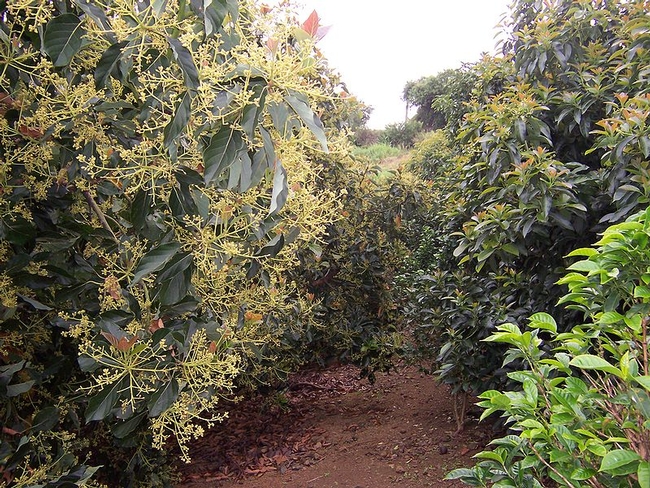Posts Tagged: coffee
In Drinking Your Cup of Joe, Do You Ever Think About Coffee Plantation Pests?
When you're drinking your daily cup of Joe to power your day, do you ever think about coffee plantation pests, such as the coffee borer beetle, aka...
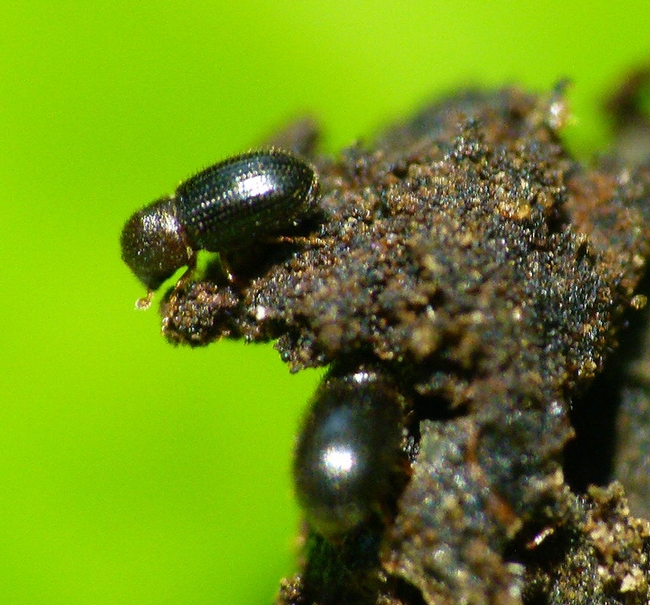
The coffee borer beetle, also known as the coffee berry borer, Hypothenemus hampei. (Courtesy of L. Shyamal, Wikipedia)
Protecting American Coffee, Wine and Baseball Bats
"Protecting American Coffee, Wine and Baseball Bats Through Areawide Integrated Pest Management (AIPM)" Those catchy words headlined a recent notice...
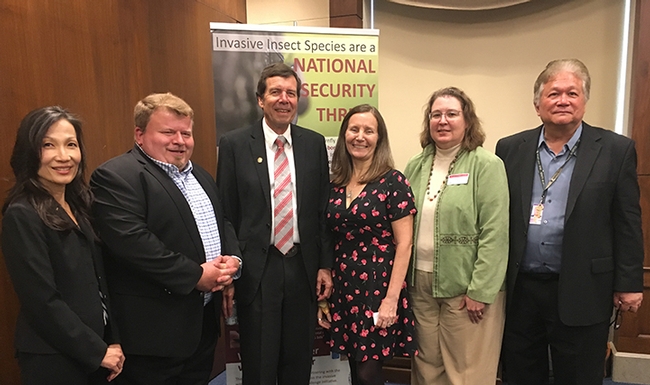
The panel gathers for a group photo following the congressional briefing. From left are Faith Oi, University of Florida; Lee Van Wychen, Weed Science Society of America; moderator Frank Zalom of UC Davis Department of Entomology and Nematology and a past president of the Entomological Society of America; Paula Shrewsbury of the University of Maryland; Kelley Tilmon of Ohio State University; and Dave Chun, chief of staff for Rep. Tulsi Gabbert. (Photo by Chris Stelzig)
California-grown coffee could be the state's next gold mine
While serving as a Peace Corps volunteer in Venezuela, Mark Gaskell got his first experience with thriving coffee plantations. Years later, as a UC Cooperative Extension advisor to small-scale farmers in California, he wondered whether coffee could be a viable specialty crop for Central Coast farmers.
Gaskell established transplants in 2001 and discovered that the sub-tropical plants could thrive in the Golden State, reported Jodi Helmer on Valley Public Radio's The Salt.
Local farmers embraced the idea of California coffee and started planting their own crops. The burgeoning state industry now boasts 30 farms growing more than 30,000 coffee trees.
California coffee is selling for as much as $60 per pound. "A single cup sold for $18. The coffee sold out within two weeks," the VPR story said.
Read the story: Eureka! California-grown coffee is becoming the state's next gold mine
KUIC Meets the Entomologists and Coco McFluffin
It was a buggy, sweet kind of day when KUIC Radio 95.3 hosted a coffee break for the Bohart Museum of Entomology and its parent organization,...
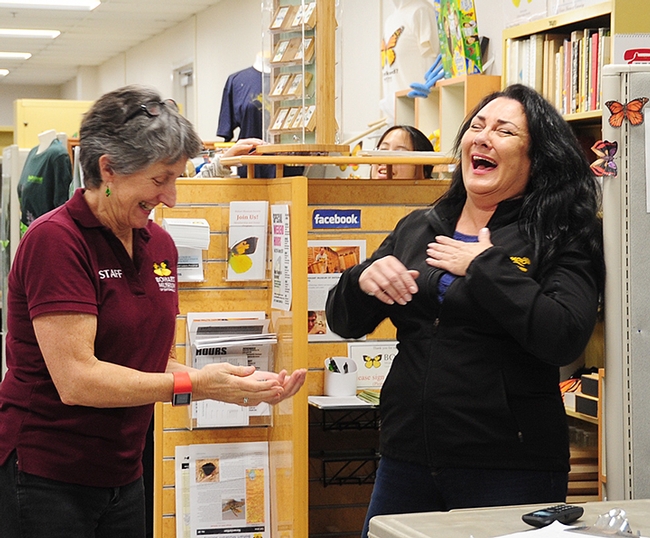
Oh, no, an escapee! Lynn Kimsey (left), director of the Bohart Museum of Entomology and KUIC host Barbara Hoover share a laugh as a Madagascar hissing cockroach decides not to star but to escape. (Photo by Kathy Keatley Garvey)
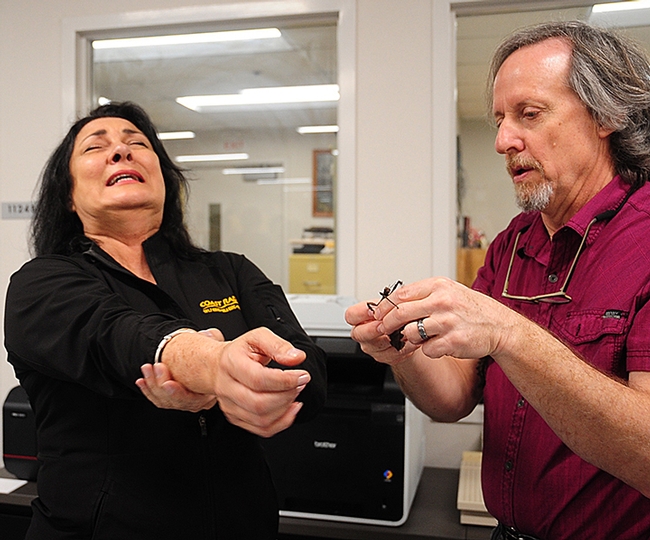
Steve Heydon, senior museum scientist at the Bohart Museum, introduces KUIC's Barbara Hoover to a walking stick--and it started walking up her arm. (Photo by Kathy Keatley Garvey)
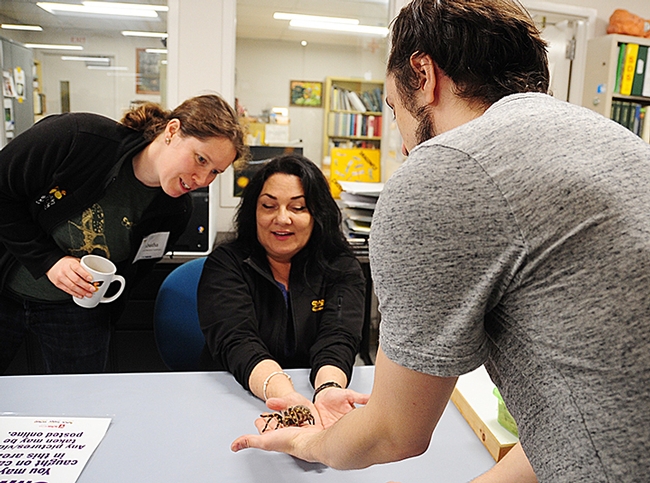
Tabatha Yang (far left), education and outreach coordinator for the Bohart, entomologist and Bohart associate Wade Spencer, entomology student at UC Davis, introduce KUIC's Barbara Hoover to a tarantula named Coco McFluffin. (Photo by Kathy Keatley Garvey)
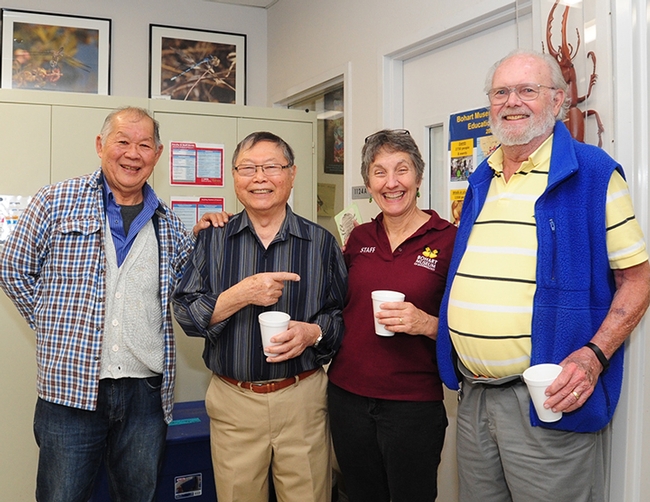
Camaraderie: Distinguished emeriti professors from the UC Davis Department of Entomology and Nematology with Lynn Kimsey, director of the Bohart and professor of entomology. With her (from left) are Harry Kaya, Robert Washino and Robbin Thorp. (Photo by Kathy Keatley Garvey)
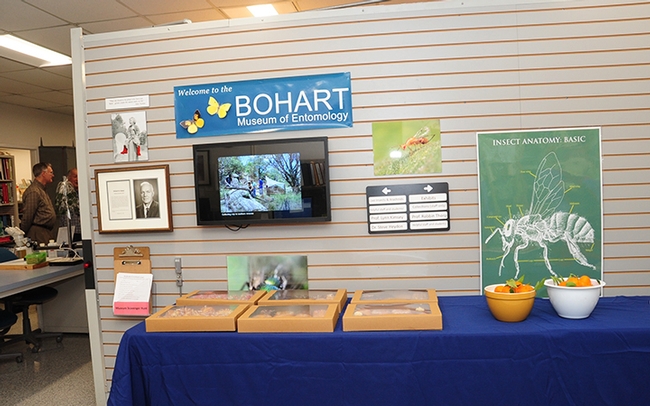
This was the scene at the start of the KUIC/Bohart coffee break--a mixture of bugs on the wall and sweets on the table. At far left is Extension apiculturist emeritus Eric Mussen. (Photo by Kathy Keatley Garvey)
California coffee can be grown amidst avocado trees
Planting coffee shrubs right next to avocado trees is allowing a Central Coast farmer to grow a commercial crop of coffee without using any additional land, water or fertilizer, reported Parma Nagappan in TakePart.com.
The farmer, Jay Ruskey was working with UC Agriculture and Natural Resources advisor Mark Gaskell when they had a "eureka moment," the story said. Coffee bushes can benefit from the environment created by an avocado plantation.
"I went through lots of cycles of plantings looking at options for using unused land," Rusky said. "Interplanting works for a lot of reasons, and coffee fits perfectly with avocados because it has similar nutrition requirements."
Americans' coffee is typically grown in tropical areas of Hawaii, and Central and South America. Gaskell, who worked with coffee growers for Central America for several years prior to joining UC in 1995, approached Ruskey with the idea of growing coffee in 2001.
“My job is to help small farms with problem solving, so I'm always looking for these kinds of synergies,” Gaskell said of the interplanting technique. “Commercial water rates are high, so ‘How are we going to get the most efficient utilization of land and water?' is at the back of every grower's mind.”
Gaskell said it is important to note that coffee also does just fine by itself in open field planting as long as it is irrigated. It doesn't require avocado interplanting for success, but avocado interplanting is an additional opportunity for coffee growing in California.
In 2014, Coffee Review rated Ruskey's coffee - sold under the name Good Land Organics - among the top 30 in the world.
The publication's top ranking of Good Land Organics has made coffee associations elsewhere sit up and take notice of the potential for a high-quality, domestic crop, the Take Part article said.
“All of a sudden I'm thrown into the spotlight of the coffee world because I'm a disruption, which is something it needs, because it does not have a lot of research going on, like with other crops,” Ruskey said.


